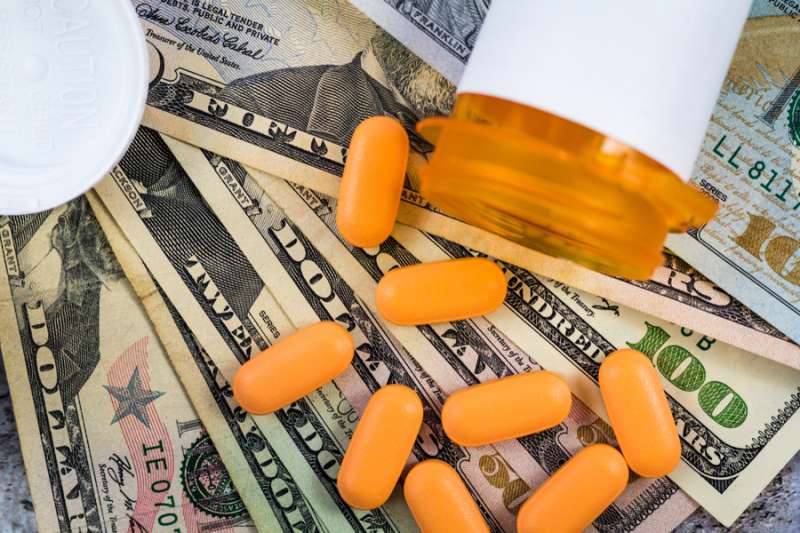An Oklahoma judge ruled Monday that the pharmaceutical giant Johnson & Johnson pay $572 million for “public nuisance” in driving the state’s opioid epidemic by pushing prescription painkillers.
In an Aug. 26 decision, Judge Thad Balkman of the Oklahoma District Court for Cleveland County found that Johnson & Johnson “engaged in a false, misleading and deceptive marketing campaign” with Oklahoma doctors and citizens to sell painkillers, ultimately driving the state’s current opioid abuse epidemic.
The state’s case against the drug company was, in essence, a “public nuisance” case, Judge Balkman said in his decision, finding that the company was guilty of “unlawful acts which ‘annoys, injures, or endangers the comfort, repose, health, or safety of others’.”
Sales representatives from the company repeatedly claimed that the drugs were “safe and effective for the long-term treatment of chronic, non-malignant pain,” the decision noted, while relying upon research paid for by the company and paid speakers, and actively presenting data out of context or omitting key information.
The deceptive behavior helped drive an “opioid crisis epidemic” that is ravaging the state, the judge’s decision read, the “current stage” of which was “started by and still primarily involves prescription opioids.”
It “caused exponentially increasing rates of addiction, overdose deaths, and Neonatal Abstinence Syndrome,” Judge Balkman said.
Prescription opioid sales increased fourfold from 1994 through 2006 in Oklahoma, before rates of unintentional overdoses and Neonatal Abstinence Syndrome (NAS) - drug withdrawal in newborn babies - soared. More than 2,100 Oklahomans died of unintentional prescription opioid overdose between 2011 and 2015, and in 2017, 4.2% of Oklahoma babies were born with NAS.
By 2015, more than 326 million opioid pills were dispensed in Oklahoma, and the state now prescribes more fentanyl per capita of any state in the country.
Johnson & Johnson and its subsidiary Janssen Pharmaceutical Companies announced on Monday that they would appeal the decision.
“Janssen did not cause the opioid crisis in Oklahoma, and neither the facts nor the law support this outcome,” said Michael Ullmann, executive vice president and general counsel of Johnson & Johnson. “We recognize the opioid crisis is a tremendously complex public health issue and we have deep sympathy for everyone affected. We are working with partners to find ways to help those in need.”
Johnson & Johnson said that their activities in the state were conducted within the law, its drugs and ingredient manufacturers complied with federal regulations, and its drugs Duragesic, NUCYNTA and NUCYNTA ER only accounted for one percent of prescription opioids in Oklahoma.
The company confirmed it has been named in more than 2,000 lawsuits by state and local governments regarding the marketing of opioids.
Catholic bishops, including Pope Francis, have spoken about the opioid epidemic.
In his November, 2016 address to a meeting of the Pontifical Academy of Sciences on narcotics, Pope Francis warned that drugs “are essentially destroyers” that bring about “a psychic, social death,” of a person, what “amounts to ‘throwing away’ a person.”
The pope warned of “vast networks” that are well-connected to positions of power and influence, and “distribution systems,” that must be countered by “retracing the chain that connects small-scale drug trade and the most sophisticated money laundering schemes embedded in financial capital and banks dedicated to money-laundering.”
A 2016 statement by Massachusetts bishops said that patients should still be prescribed painkillers “for long and short term pain management” while warning that “overuse by the patient, along with access to vast quantities of opioids by unintended users, often leads to abuse, addiction and death.”
“We exhort health care providers to demand improved education within their own professional groups about the appropriate indications, prescriptions and use of opioid medications,” the bishops said.
The opioid epidemic has helped drive down life expectancy in the U.S., as in 2017 the life expectancy fell from 78.7 to 78.6—its third straight year of decline after more than two decades of growth.
That news came after more than 70,000 drug overdose deaths in 2017 were reported by the Centers for Disease Control, more than two-thirds of those deaths involving opioids; the number of opioid-related overdose deaths in 2017 skyrocketed to six times that of 1999.
The opioid epidemic occurred in three waves, the first caused by widespread prescription of painkillers in the 1990s that drove up overdose deaths beginning in 1999, according to the CDC.

